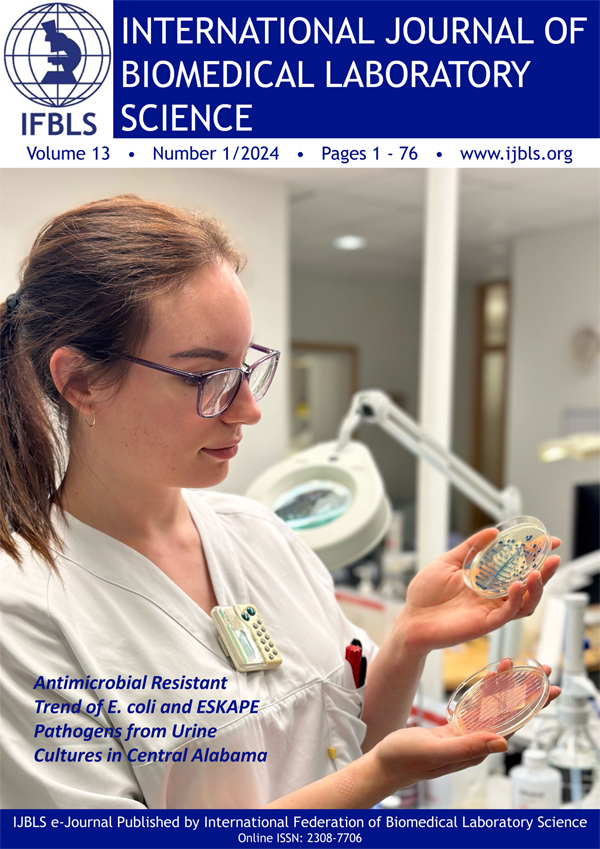Int. J. Bio. Lab. Sci 2014 3:41-47 【Abstract】 【PDF】
Abstract
Assessing iron status during pregnancy is fraught with difficulties because the profound hemodynamic changes associated with pregnancy affect several indexes of iron status. Current markers of iron deficiency tend to be less reliable in pregnancy especially ferritin which is an acute phase reactant and as such will not be reliable in the diagnosis of iron deficiency anaemia among pregnant women with infections. Soluble transferrin receptor assay may be useful in these situations because
it reflects the degree of iron requirement in relation to supply and it is not an acute phase reactant. Our aim was to evaluate the usefulness of soluble serum transferrin receptor (sTfR) in relation to serum ferritn in the diagnosis of iron deficiency and iron deficiency anaemia during pregnancy. Serum iron and soluble transferrin receptor concentration were determined using ELISA technique while haemoglobin concentration was determined using automatic cell counter PCE-210 version 5.10 by ERMA INC. Tokyo. One hundred and fifty consenting pregnant women within the age range of 15-45 years were recruited for the study. In 81.81% of the samples analysed serum ferritin and soluble transferrin receptor agreed on the presence/absence of iron deficiency anaemia.18.18% of the pregnant women that were shown to be without iron deficiency anaemia with serum ferritin (serum iron < 12ng/ml) were shown to have iron deficiency anaemia with soluble transferrin receptor (sTfR> 2.4 ug/ml). The specificity of sTfR was 100%. The sensitivity of sTfRin relation to both
anaemia and depleted iron stores was 67.99%, but this figure may not be a true reflection of sensitivity because of small sample size. sTfR during the first trimester was low (1.34±0.48) but increased significantly (p < 0.05) in second (2.98±0.72) and third trimester (2.59±0.73). The prevalence of iron deficiency anaemia was shown to be 18.0% when using serum ferritin and haemoglobin as markers (SI < 12ng/ml and Hb< 11g/dl) and 22.0% when soluble transferrin receptor and haemoglobin were used as markers (sTfR> 2.4ug/ml and Hb< 11g/dl) and the difference was statistically significant (p < 0.5).Conclusions: sTfR seems to be a more specific and sensitive marker of iron deficiency anaemia in pregnancy when compared to serum ferritin especially in the presence of infection.
Key words: Anaemia, Soluble Transferrin Receptor, Ferritin, Pregnancy


